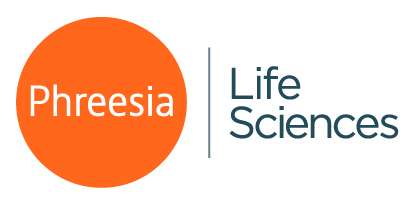Virtual health and telehealth have transitioned into a permanent part of the healthcare ecosystem, fundamentally altering how patients and healthcare providers interact and transforming the very concept of point of care. As virtual health becomes increasingly prevalent, healthcare marketers have a rising opportunity to extend marketing reach with new virtualand telehealth strategies.
To shed light on telehealth’s growing influence and its implications for point of care marketing, the Point of Care Marketing Association (POCMA) is delving into an illuminating patient survey conducted by Phreesia, a leading patient intake management platform, and their interview with Tim Noone, Senior Vice President, Engagement Strategy, at CMI Media Group on the findings.

The Shift to Telehealth
The COVID-19 pandemic mandated a shift in healthcare delivery, propelling telehealth from a niche service to a mainstream care option. This rapid adoption left a lasting impression on providers and patients and also demonstrated the vital role virtual care can play in streamlining healthcare provider (HCP) workflows and enhancing patient experiences.
As the dust settled, it has become clear that telehealth is here to stay, reshaping the healthcare landscape and offering unprecedented accessibility for both patients and HCPs. The convenience and flexibility of virtual consultations have resonated strongly with patients, potentially encouraging more frequent engagement with healthcare services. This is particularly true for those facing scheduling conflicts, transportation issues, or lifestyle constraints.
Telehealth has proven especially valuable for certain types of care:
- Quick consultations and follow-ups
- Management of chronic conditions
- Mental health services
- Discussions about sensitive health issues
As Tim Noone explains, telehealth may expand patient access in ways much larger than logistics: “The ability to connect with the provider from home removes patient anxiety related to health concerns during rises in seasonal illnesses, and it’s created a safe space for those seeking mental-health counseling.” Receptivity and participation may be higher for some patients who feel more comfortable in a virtual health context.
The ripple effects of widespread telehealth adoption could significantly boost preventive care and non-emergency services, contributing to overall improvements in public health and wellness. For healthcare providers, telehealth opens new avenues for patient care, enabling swift follow-ups and remote consultations. This is particularly beneficial for managing long-term care journeys, complex conditions, or situations where patients face temporary mobility challenges.
By integrating virtual care into their practice, providers can potentially enhance patient outcomes, facilitate better communication, and improve treatment adherence. As telehealth continues to evolve, it promises to play an increasingly vital role in shaping the future of healthcare delivery and patient engagement.
Data Reveals Patient Perspectives on Telehealth

To gauge the true impact of telehealth, Phreesia surveyed nearly 2,000 patients during their doctor’s appointment check-ins in August and September of 2022. The results not only illuminate patients’ attitudes towards virtual care but also reveal how this new mode of healthcare delivery is reshaping the very concept of point of care—and with it, the landscape of healthcare marketing opportunities. Over a third had virtual healthcare visits in the prior six months, indicating widespread adoption. Moreover, the survey painted a compelling picture of telehealth’s growing popularity:
- 84% said they are at least somewhat likely to have another virtual healthcare visit within the year, suggesting high satisfaction and comfort with the format
- Patients cited flexibility, elimination of travel time, and faster appointment scheduling as driving attractions of telehealth, highlighting its convenience factor
- Over 70% of recent telehealth users feel very or extremely comfortable discussing new health issues or requesting new prescriptions during virtual consultations
- Many patients found virtual interactions more conducive to discussing health issues, ranked it as the fourth most-common reason for planning a future telehealth appointment
As we navigate new modes of healthcare delivery, one thing is certain: telehealth is not just changing how care is provided—it’s changing how we think about and approach patient engagement and the patient priorities that guide healthcare journeys.
Harnessing Telehealth Insights for Today’s Healthcare Marketing
The shift to virtual health presents a golden opportunity for marketers who can effectively engage patients during crucial moments in their digital health journey. Here’s how to leverage these insights:
1. Embrace virtual health’s role in the patient journey
While some conditions will always require in-person care, virtual health and telehealth are rapidly becoming cornerstones of modern healthcare delivery. As Noone points out, virtual visits can lead to “more frequent health monitoring and improved patient adherence.” For marketers, understanding the digital health point of care is no longer optional—it’s essential as part of your marketing mix.
2. Reimagine Point of Care campaigns
By complementing traditional in-office campaigns with virtual strategies, marketers can evolve their tactics and reach patients at critical decision-making moments. These new points of care expand the trusted and health-focused space that defines Point of Care. Virtual health platforms offer new touchpoints for messaging, allowing for more complex, patient-centric communication journeys.
With the introduction of these new point of care spaces, marketers have more room to customize and creatively expand around:
- How virtual health users navigate digital content and locations
- Integrating in-person, print, and digital media around telehealth triggers and behaviors
- Tracking and data resulting from user behavior in virtual and telehealth experiences
- Reach customers with new virtual-specific support and educational materials
- Enhancing patient and HCP conversations and knowledge
- Creating AI-based or automated assistance to compliment visits
- Look at how virtual care messaging could be integrated with other Internet of Medical Things (IoMT) IoT devices or opportunities
3. Perfect the art of timely messaging
Virtual health touchpoints may not be as personal as in-office visits on first blush, but the virtual exam room is a uniquely private space offering unprecedented opportunities for personalized, targeted messaging at exactly the right moment. Noone emphasizes the power of this virtually defined messaging to ‘nudge’ patients:
“I really think this ‘nudge’ is what may empower patients to inquire about a new treatment option or to switch [treatments],” Noone says, “Whether that’s an extension of general-market consumer messaging, or a quick informative callout around efficacy or safety or savings, that could really be the last touch that’s needed to facilitate that discussion and drive a positive outcome.”
4. Seize new opportunities in virtual healthcare
Virtual healthcare opens doors to deeper patient engagement with more opportunity for direct-to-patient marketing within the high-relevance of the Point of Care channel. Direct connections to resources, support, and information hubs can address knowledge gaps, answer FAQs, and provide condition-specific information. This not only activates patients but also builds treatment adherence by empowering them with knowledge and ways to get more expeditious answers and support for questions that could become barriers to care.
5. Leverage advanced targeting and measurement
Virtual health provides marketers with robust data for targeting and measuring campaign success. And the data is supporting high ROI when virtual health is integrated into point of care marketing strategies. Noone notes, “At this point in time…you’re really able to understand that return on investment.” A data-driven approach allows for more informed decision-making and stronger justification for investment in virtual point of care channels.
Integrating virtual health into your broader strategy
To fully capitalize on virtual care and telehealth opportunities, use POC data and tools to:
- Develop an omnichannel approach that ensures consistent messaging across virtual and in-person touchpoints.
- Create seamless, integrated experiences spanning both virtual and in-person care settings.
- Craft targeted content to support patients before, during, and after telehealth consultations.
- Use telehealth interaction data to personalize engagement and inform future marketing efforts.
- Explore partnerships with telehealth platforms and digital health solutions to expand your reach and impact.
Closing Points
The Phreesia patient survey highlights the growing significance of telehealth in point of care marketing, offering a roadmap for marketers navigating this new digital landscape. By embracing these insights, marketers can:
Develop more targeted and effective engagement strategies
Create seamless experiences that bridge virtual and in-person care
Leverage new touchpoints to deliver timely, relevant information
Harness data-driven approaches to optimize marketing efforts
The telehealth revolution is not just a temporary shift—it’s a fundamental reimagining of healthcare delivery and patient engagement. As we move forward, the ability to effectively engage patients, healthcare providers, and caregivers in this increasingly hybrid world will be a key differentiator for successful healthcare marketing campaigns. As the industry continues to evolve at a rapid pace, organizations like the Point of Care Marketing Association (POCMA) are at the forefront, providing crucial insights and resources to healthcare and pharmaceutical marketers.
Together, we can shape the future of point of care marketing, driving better outcomes for patients and providers alike.
Use our product finder tool to find the ideal solution for your point of care campaigns.
*This article is based on an original article published by Phreesia Life Sciences with permission. Learn more about Phreesia Life Sciences.

